#Centennial
Text

ANG 107th FS Centennial Livery A-10C on practice day at the 2017 Selfridge Michigan Airshow .
#Michigan Air National Guard#107th FS#Red Devils#A-10#Warthog#airshow photos#photography#aviation#attack#Centennial#livery#Thunderbolt II#Jet#plane#ANG
190 notes
·
View notes
Text


I think trains should try silly new paint schemes/liveries for fun. My friends and boyfriend tried to place many many stars and stripes on me. It was very fun.

#stex#starlight express#🪙 art#stex alter#stex golden spike#Union Pacific#DDA40X#Centennial#diesel locomotive
21 notes
·
View notes
Text


100 Year Anniversary and Dancing Men lapel pins by Tom Campbell for the The Sherlock Holmes Society of the Cape Fear (1987)
#should i get one#sherlock holmes#merchandise#illustration#sherlock holmes pin#The Sherlock Holmes Society of the Cape Fear#dancing men#centennial#1987#Tom Campbell#lapel pin#pins#doctor watson#dr john watson#john watson#vintage pins
25 notes
·
View notes
Text

Seen in 2023:
Xala (Ousmane Sembene), 1975
44 notes
·
View notes
Text
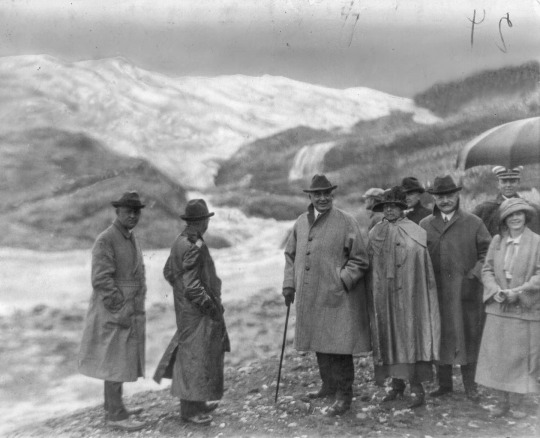
Exactly 100 years ago, President Warren Gamaliel Harding escaped the sweltering summer weather and increasingly dark political climate of Washington, D.C. to embark upon a lengthy cross-country trip through parts of the American West still relatively unaccustomed to frequent visits by the nation’s Chief Executive. Billed as a “Voyage of Understanding”, Harding’s trip was seen as a prelude to his potential campaign for re-election the following year, and an opportunity to put some literal and figurative distance between the President and the rumors of rampant corruption swirling around some of Harding’s friends and closest aides from Ohio, as well as several Cabinet members — rumors eventually proven to be true, resulting in indictments, convictions, prison sentences, and even suicides. As President Harding prepared for his Western tour, he could feel the heat as the scandals plaguing his Administration began to reach a boiling point. Speaking privately to the famous journalist and editor William Allen White, Harding said of the Presidency, “My God, this is a hell of a job! I have no trouble with my enemies…But my damn friends, they’re the ones that keep me walking the floor nights.”
Harding’s planned 15,000-mile Voyage of Understanding began on June 20, 1923. Traveling aboard the private Pullman railroad car Superb, the 57-year-old President left Washington, D.C. accompanied by First Lady Florence Harding, Speaker of the House of Representatives Frederick H. Gillett, new Interior Secretary Hubert Work, and a large retinue of aides, friends and their families, doctors, Secret Service agents, and members of the press. Work had become Secretary of the Interior a few months earlier when the previous Secretary, Albert B. Fall, became the “fall guy” for the Teapot Dome scandal. For his role in the scandal, Fall was later convicted of accepting bribes — the first former Cabinet member in American history to serve time in prison for crimes committed while in office. At later points along the journey, Harding’s party was also joined by Secretary of Agriculture Henry C. Wallace (father of future Vice President Henry A. Wallace) and Secretary of Commerce (and future President) Herbert Hoover.

The last week of June 1923 was spent traveling through the Mountain West — Colorado, Wyoming, Utah, Idaho, Montana, and Yellowstone National Park. The beginning of July saw the Presidential party in the Northwest and celebrating Independence Day in Portland, Oregon before boarding the USS Henderson in Tacoma, Washington on July 5, 1923 to sail to Alaska. One of the expected highlights of the Voyage of Understanding was the northernmost leg of the trip, as Harding became the first incumbent President of the United States to visit Alaska and Canada. The Territory of Alaska had been purchased for the United States by Secretary of State William Seward in 1867 when Warren G. Harding was two years old, and at the time of Harding’s visit, Alaska was still 35 years from being admitted to the Union as the 49th state. But the President spent nearly the entire month of July traveling through the state, mixing public appearances with private recreation and sightseeing. On July 15, 1923, Harding hammered a golden spike in Nenana, Alaska to officially complete the Alaska Railroad. And ten days later, the President crossed into Canada, fishing on the Campbell River in British Columbia on July 25th and then making an official visit the following day in Vancouver, where he was greeted by one of the largest crowds of his voyage — estimated at over 40,000 people — and where he also squeezed in a round of golf at the exclusive Shaughnessy Golf Club.

The President returned to American soil on July 27th, arriving in Seattle and making several speeches in a busy six-hour period — first to Camp Fire Girls at Volunteer Park, then to nearly 30,000 Boy Scouts at Woodland Park, and finishing the day addressing over 30,000 people at what is now Husky Stadium at the University of Washington where he predicted statehood for Alaska, where he had spent most of the month. After making a brief appearance that evening at the Seattle Press Club, Harding boarded his train that night to travel to Portland, Oregon.
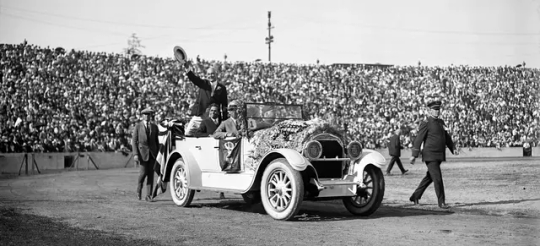
But something was not right. The President seemed to be exhausted, perhaps from the grueling trip through geography much wilder than Harding’s native Ohio or swampy Washington, D.C. Despite his exciting journey through Alaska and the energetic welcome provided by the Canadian people, Harding was clearly wiped out by the time he reached British Columbia. The President did head to the country club while in Vancouver, but he was so tired that after six holes of golf his foursome skipped directly to the eighteenth hole, seemingly completing the round without tipping off the press that Harding couldn’t play the entire course.
From the White House, nine days before embarking upon his Voyage of Understanding, Harding wrote a quick note to Solicitor General James M. Beck who had wished the President a safe journey on his upcoming trip. Thanking Beck, Harding wrote, “I shall try to remember not to overdo (it) in crossing the continent.” And, on June 14, 1923, six days before leaving, President Harding wrote a short letter to a young girl from Hartford, Connecticut named Vivian Little, who had recently sent the President a four-leaf clover as a good luck charm. “Thank you so much for the four-leaf clover which you were so good as to press and send to me,” the President wrote. “I hope it will bring me good luck and that it will bring you still more of the same.”
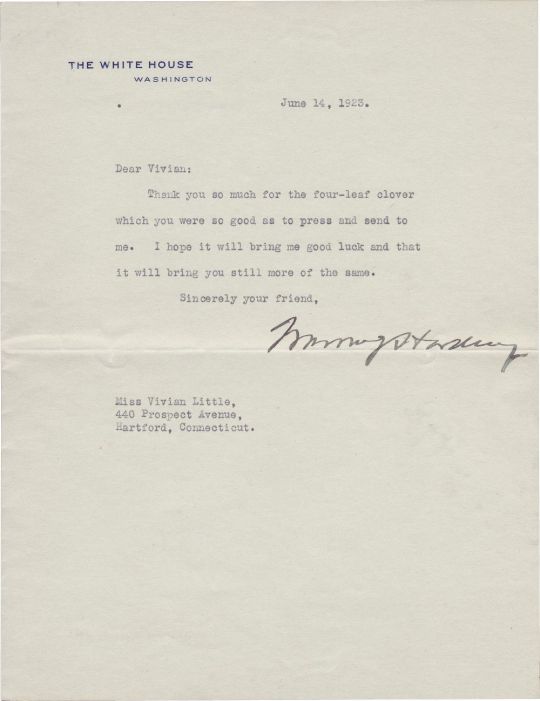
However, any luck that President Warren G. Harding still had seemed to be running out. Ill and exhausted after leaving Vancouver, Harding tried to rest aboard the USS Henderson as it sailed to Seattle in the early morning hours of July 27. At some point around 3 AM, Harding and the other passengers aboard the Henderson were jolted awake as the ship crashed into the USS Zeilin, an American destroyer accompanying the Presidential party while they traveled through the foggy Puget Sound. This was not the first mishap of the Voyage of Understanding. While traveling through Colorado early in the trip, three people from the President’s party had been killed in a car accident. And now, after a few weeks in Alaska where Harding was able to at least temporarily forget about his Administration’s many troubles, the President was not only sick and tired but two of his Navy’s ships had just smashed into each other almost as soon as he had returned to the continental United States. While the USS Zeilin was badly damaged in the collision, the USS Henderson was not and there were apparently no major injuries on either vessel. But when the President’s valet, Major Arthur Brooks, came to Harding’s stateroom aboard the Henderson to inform him that the captain was calling for all hands on deck, he found the depressed President lying on his bed with his face buried in his hands. “I hope the boat sinks,” President Harding quietly muttered.
It was just hours later that Harding made his whirlwind tour through Seattle, putting on a brave face at his public appearances, but clearly not feeling well. While he was never considered a brilliant orator like Abraham Lincoln, Benjamin Harrison, or his immediate predecessor, Woodrow Wilson, Harding was a strong speaker and excellent communicator who had a unique ability to connect with audiences, but he was obviously — and unusually — halting and confused while speaking in Seattle on July 27th. As he boarded his train at Seattle’s King Street Station that night, Harding was examined by his doctor and by Interior Secretary Hubert Work, who had once been a physician, and they decided to cancel the next several days of planned activities. Instead of stopping in Portland and then visiting Yosemite National Park, the Presidential party was ordered to proceed directly to San Francisco where Harding could rest before giving a speech on the radio planned for July 31st which was expected to be heard by over 5 million people.
Despite the four-leaf clover that had been sent to him by Vivian Little before his Voyage of Understanding, Warren Gamaliel Harding’s luck seemed to be running out. And, as his train sped through Oregon en route to San Francisco’s Palace Hotel on July 28, 1923, President Harding was also running out of time.
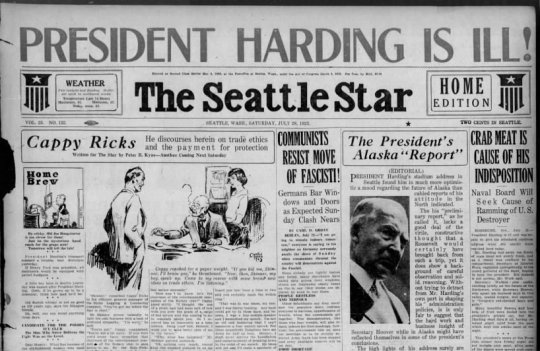
#History#Presidents#Warren G. Harding#President Harding#Death of Warren G. Harding#100 Years Ago#100th Anniversary#Centennial#Presidential History#Voyage of Understanding#Politics#Political History#Harding Administration#Presidential Deaths#Teapot Dome#Presidential Scandals#Presidential Corruption#Political Scandals#Political Corruption
50 notes
·
View notes
Text

CHICAGO
#chicago#illinois#chicago illinois#navy pier#navy pier chicago#centennial#ferris wheel#skycrapers#rascacielos#buildings#edificios#beautiful city#hermosa ciudad
81 notes
·
View notes
Text
Hob Gadling be like:

#the sandman#the sandman netflix#hob gadling#I am 100% correct#he got jealous#I can’t blame him tbh#what ur centiental date leaves for some half-wit writer?#fuck off bro#I’d be so salty#centennial husbands#oh that’s how u spell it#why do I read it that way?? it’s fucking#centennial#damn it#anyways#dreamling
95 notes
·
View notes
Video
duck duck goose
by Paul Nicholson
Via Flickr
#centennial#park#nashville#tn#tennessee#bird#fowl#geese#duck#doose#ducks#waves#pond#water#reflection#light#silouhette#my_favs#landscapes_architecture#published#artsy#BNA#flickr
6 notes
·
View notes
Text

. . . got caught looking.
#gluten free#peak buster#double ipa#ghostfish brewing company#seattle#washington#independent craft#double india pale ale#summit#azacca#centennial#eureka
2 notes
·
View notes
Text
WNYC Turns 100
July 8, 1924 was the day that WNYC radio in New York first went on the air. It’s been years since I was a regular listener, but I am a big fan of public media, and certainly went through phases when I listened every day.
The benchmark puts me in mind of my own experience at the station. I was on The Leonard Lopate Show shortly after my first book No Applause came out. You’ll find reference to my…
3 notes
·
View notes
Text
But...the NYRA paid out all winning tickets after the race was declared official.
About 50 years ago at Centennial, the small Denver track, a race was listed as 1 1/16 miles. Now, this was extremely unusual -- virtually all route races were run at 1m70yards, 40 yards shorter. Come race time, the gate crew wheeled the starting gate into the 1m70y position, just as they had done thousands of times before. Three stewards, ten jockeys, ten trainers, every owner present, and the track announcer all missed the error. Gates open, race is run, I cheer my winner and winning exacta home. Yay!
About a minute later the penny dropped somewhere upstairs and after a delay, the announcer comes on and declares the race has been called 'no race'. All wagers refunded, no winnings.
You could have fried an egg on my neck.
(And before you ask...yes, I missed the incorrect distance as well, but as they say, it wasn't my job!)
3 notes
·
View notes
Text
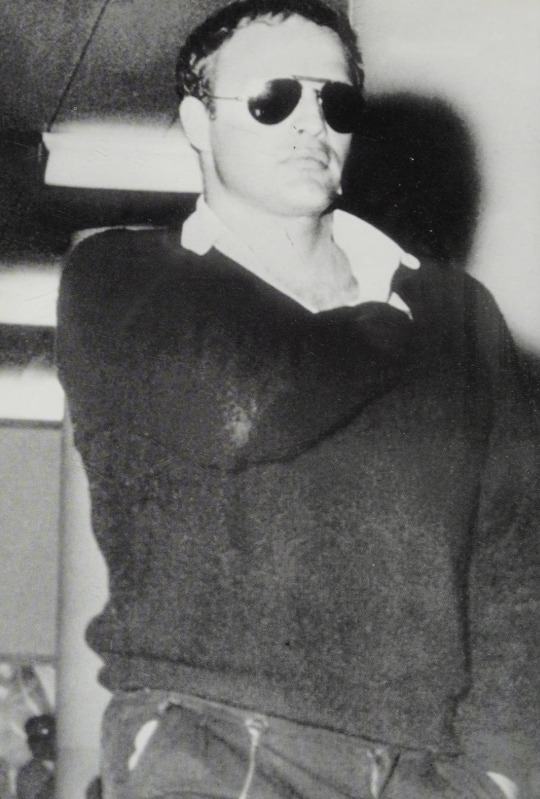
Remembering Marlon Brando on what would have been his 100th birthday.
April 3, 1924 - July 1, 2004.
#marlon brando#rebel style#brando#style icon#inside the actors studio#actors#method acting#classic cinema#classic actors#lee strasberg#100#centennial#botd#candid#50s icons#1950s#1960s#1970s
3 notes
·
View notes
Text


Harney County, Oregon Centennial Coin - 1889 to 1989
Proud Of The Past
Poised For The Future
#centennial#coin#100 years#oregon#eastern oregon#harneycounty#the great pnw#the old west#oregonoutback#pnw#oregon outback#burns oregon#harney county#the pacific northwest
4 notes
·
View notes
Text

Seen (again) in 2024:
Sherlock Jr. (Buster Keaton), 1924
#films#movies#stills#silent#Sherlock Jr#Buster Keaton#Kathryn McGuire#Hollywood#1920s#centennial#seen in 2024
11 notes
·
View notes
Text

Florence Kling Harding was a divorcée who had a son from her first marriage that she had given up to be raised by her parents by the time she met Warren Gamaliel Harding in 1890 when he was the owner and editor of the Marion Star newspaper in Marion, Ohio. Florence was instantly attracted to the handsome Harding, but the feeling wasn’t immediately reciprocated. Harding was five years younger than Florence and already had a reputation as a notorious womanizer. However, Florence was persistent in her advances and Harding was practically incapable of turning women down — his father, Dr. George Tryon Harding, once told him, “Warren, it’s a good thing you wasn’t born a gal. Because you’d be in the family way all the time. You can’t say no.” — and they were married in July 1891. It’s impossible to know whether Harding truly fell in lover with Florence, or if he saw her as a potential key to unlock his burning ambition, but it’s worth noting that Florence very quickly went to work running nearly every aspect of Harding’s newspaper business and helping turn it into a success financially. And that Harding was relentlessly unfaithful to his wife throughout their marriage. Warren and Florence never had a child together, but Harding fathered an illegitimate daughter with a young girl from their hometown of Marion, Ohio just a year before he was elected President (Harding’s daughter, Elizabeth Ann Britton, kept a low profile and avoided publicity throughout her life and died in 2005).
But despite Harding’s extensive infidelity and the scandals and allegations of corruption swirling around Harding’s Administration, Florence Harding — now First Lady — tirelessly attended to the 29th President of the United States after he fell ill during his cross-country Voyage of Understanding in the summer of 1923. She remained near his bedside as Harding rested and hoped to recuperate at the Palace Hotel in San Francisco in early August 1923. When they had first arrived in San Francisco on July 29th after canceling all planned events in California due to Harding’s illness, the President’s doctors were worried by his condition, which they had described as “grave”. Originally announced as “ptomaine poisoning” with severe indigestion caused by crabs or seafood that Harding had eaten while visiting Alaska, the bulletins released by his medical advisers noted that the President’s breathing was labored and he had a dangerously rapid pulse. After taking X-rays, the doctors also diagnosed Harding with pneumonia and were worried about the effects of his illness on his heart. But by August 1st, Harding’s fever had broken and his pulse and breathing were closer to normal. Although they had expected to remain in San Francisco for at least two weeks while Harding recovered, the President was in good enough spirits on August 1st to talk about traveling to Catalina Island where he was originally scheduled to go on a deep-sea fishing trip with his friend and supporter William Wrigley Jr.
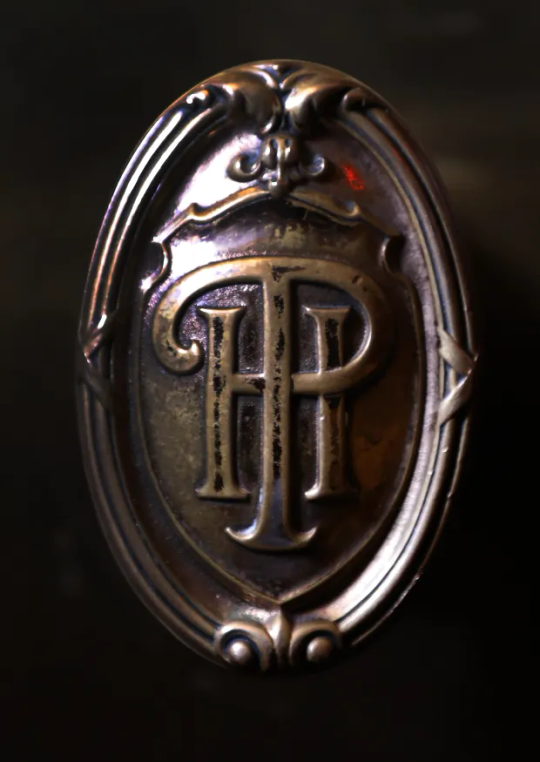
As President Harding rested in Room 8064 of the Palace Hotel on Thursday, August 2, 1923, he was feeling better than he had in days. To the members of the Presidential traveling party that visited him throughout the day Harding acknowledged that he was tired but said that he felt “out of the woods.” In the afternoon, Harding and Secret Service agent Colonel Edmund Starling spoke again about deep-sea fishing off of Catalina Island before returning to Washington, D.C. and Harding joked about how he hoped to have better luck there than in Alaska where he didn’t catch any fish.
Early in the evening of August 2nd, Mrs. Harding brought in a copy of the latest edition of the Saturday Evening Post and thumbed to a story by Samuel George Blythe called “A Calm Review of a Calm Man”. With allegations of corruption bearing down on several of Harding’s closest aides and Cabinet officials, the President had been depressed and unable to find silver linings in the clouds gathering over his Administration. But as the First Lady read Blythe’s article out loud to him, Harding was pleased to actually hear some positive reviews about the President’s governing style. “That’s good,” said the President. “Go on; read some more.” As Mrs. Harding was reading, the President closed his eyes while reclining on the bed with his head propped up by the pillows. When she finished reading, the First Lady left Harding’s room and went to her nearby room in the suite while the President was seemingly sleeping.
One of the nurses attending to the President, Ruth Powdery, filled a glass with water in the bathroom and brought it to Harding so that he could take his medication before going to sleep for the night. The nurse was walking towards Harding when she noticed that his face suddenly twitched and his mouth dropped open. As the President’s head fell limply to the side and he slumped over the nurse called for Mrs. Harding who rushed into the room and instantly screamed for a doctor. Commerce Secretary Herbert Hoover and Interior Secretary Herbert Work ran into the room almost immediately along with Harding’s personal physician, Brigadier General Dr. Charles E. Sawyer, but it made no difference. It was 7:32 PM on August 2, 1923 and President Harding was dead. He was 57 years old.
Dr. Sawyer quickly declared that Harding had died of a cerebral hemorrhage, but there was some disagreement by others present about the exact cause of death. As other doctors arrived on the scene the distraught First Lady asked whether any of them could do anything for the President and it took nearly an hour before she could be convinced that Harding was actually dead. With the doctors disagreeing about whether or not the President had died of a stroke or a heart attack or some other cause, there was a push to conduct an autopsy in order to make a final determination. However, Mrs. Harding was adamantly opposed to allowing an autopsy to be performed on President Harding. She even refused permission for an artist to make a death mask of her late husband. Florence Harding’s actions in the wake of her husband’s death would later lead to allegations that she may have poisoned the President — either to punish him for humiliating her by engaging in numerous extramarital affairs or out of mercy to prevent his reputation from being further tarnished by the many scandals of his Administration. The rumors about Florence Harding possibly poisoning Warren G. Harding have never been backed by any solid evidence, but some of Mrs. Harding’s actions immediately after the President’s death were unusual. After Harding’s body was returned to Washington, D.C. and he was lying in state in the East Room of the White House, Mrs. Harding reportedly sat next to his open casket for several hours overnight while saying to the dead President’s face, “No one can hurt you now, Warren.”
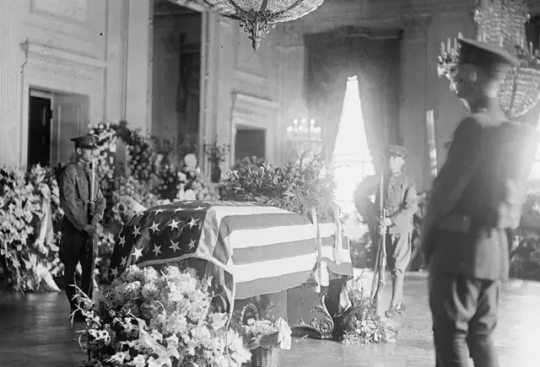
In Plymouth Notch, Vermont, telephone services were turned off at night in 1923. At a farmhouse in this small rural area of Vermont, Colonel John Calvin Coolidge Sr., who was a justice of the peace and a notary public, was hosting his son and daughter-in-law, who had come to town for a few days of vacation. The Colonel’s son was the Vice President of the United States, Calvin Coolidge, and while he had learned of President Harding’s illness a few days ago, he was under the impression that Harding was improving and would make a full recovery. On August 2, Calvin Coolidge had helped his father with some yard work around the farm and went to bed fairly early. Late that night, Colonel Coolidge heard someone knocking on his door and answered it while Vice President Coolidge was still sleeping. Since there was no way to contact the Coolidge household by phone, the nearest telegraph operator rounded up two members of the Vice President’s staff who were staying nearby and a reporter and drove to Plymouth Notch. When Colonel Coolidge opened the door at about 10:30 PM, the men handed him a note for the Vice President that read, “The President died instantly and without warning and while conversing with members of his family at 7:30 PM. His physicians report that death was apparently due to some brain embolism, probably an apoplexy.”
The Vice President and his wife, Grace, were awakened shortly afterwards by his father calling for them and they headed downstairs. When Coolidge saw the look on his father’s face and heard the tone of his voice, he realized that President Harding was dead. “The only times I have ever observed that before,” Coolidge said of his father’s demeanor that night, “were when death had visited our family. I knew something of the gravest nature had occurred.” A special phone line was opened for Coolidge at a store near his father’s farm so that Coolidge could speak to Secretary of State Charles Evans Hughes. Hughes recommended that Coolidge take the Presidential oath of office as soon as possible, seconding the opinion of the Attorney General, who had sent a telegram to Coolidge suggesting the same thing. The Secretary of State told Coolidge that he could be sworn in by any notary and Coolidge told Hughes, “My father is a notary.”
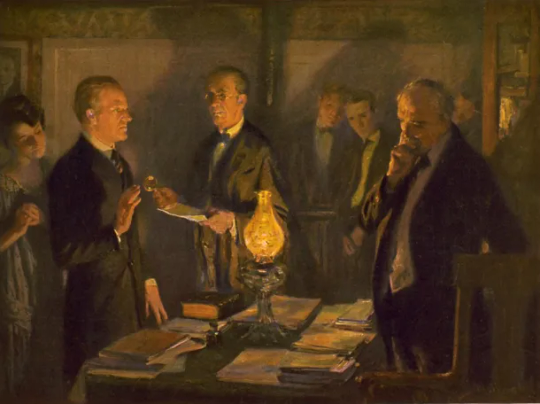
Colonel John Coolidge searched through his private library for a copy of the Constitution, which had the exact wording of the Presidential oath of office. A kerosene lamp was lit in Colonel Coolidge’s sitting room and at 2:47 AM on August 3, 1923, Calvin Coolidge was sworn in as the 30th President of the United States by his own father. When asked later what he was thinking at that moment, Coolidge remembered, “I thought I could swing it.” After he was sworn in, President Coolidge went upstairs and promptly went back to sleep. The new President and his family traveled to Washington, D.C. later that day to await the return of President Harding’s body, which was traveling on the same train that had taken him on his “Voyage of Understanding” as it crossed a country in deep mourning and the nation prepared for a State Funeral.

#History#Warren G. Harding#President Harding#Harding Administration#Death of Warren G. Harding#Harding Death Centennial#Presidents#Presidential History#Politics#Political History#Presidential Health#Presidential Deaths#Funeral of Warren G. Harding#100 Years Ago#Centennial#100 Years#Calvin Coolidge#Vice President Coolidge#President Coolidge#Inauguration of Calvin Coolidge#State Funeral#Palace Hotel#San Francisco#Palace Hotel San Francisco#San Francisco History#California#California History
24 notes
·
View notes
Text
Bear Bottom Bar & Grill - Wyoming Highway 30 in Centennial, WY

Pictured above is a pepperoni and pineapple pizza with green chili sauce instead of tomato our midwest correspondent Denis had. See below for his thoughts!


#Bear Bottom Bar & Grill#Bear Bottom Bar and Grill#Bear Bottom#Centennial#Wyoming#WY#BFD#pizza#pizza pie#pizza slice#pepperoni#pineapple#toppings#specialty slice#green chili sauce#pizzeria#I love pizza#pizza rocks#pizza rules#za#foodporn#food porn#that's so cheezy!
12 notes
·
View notes
